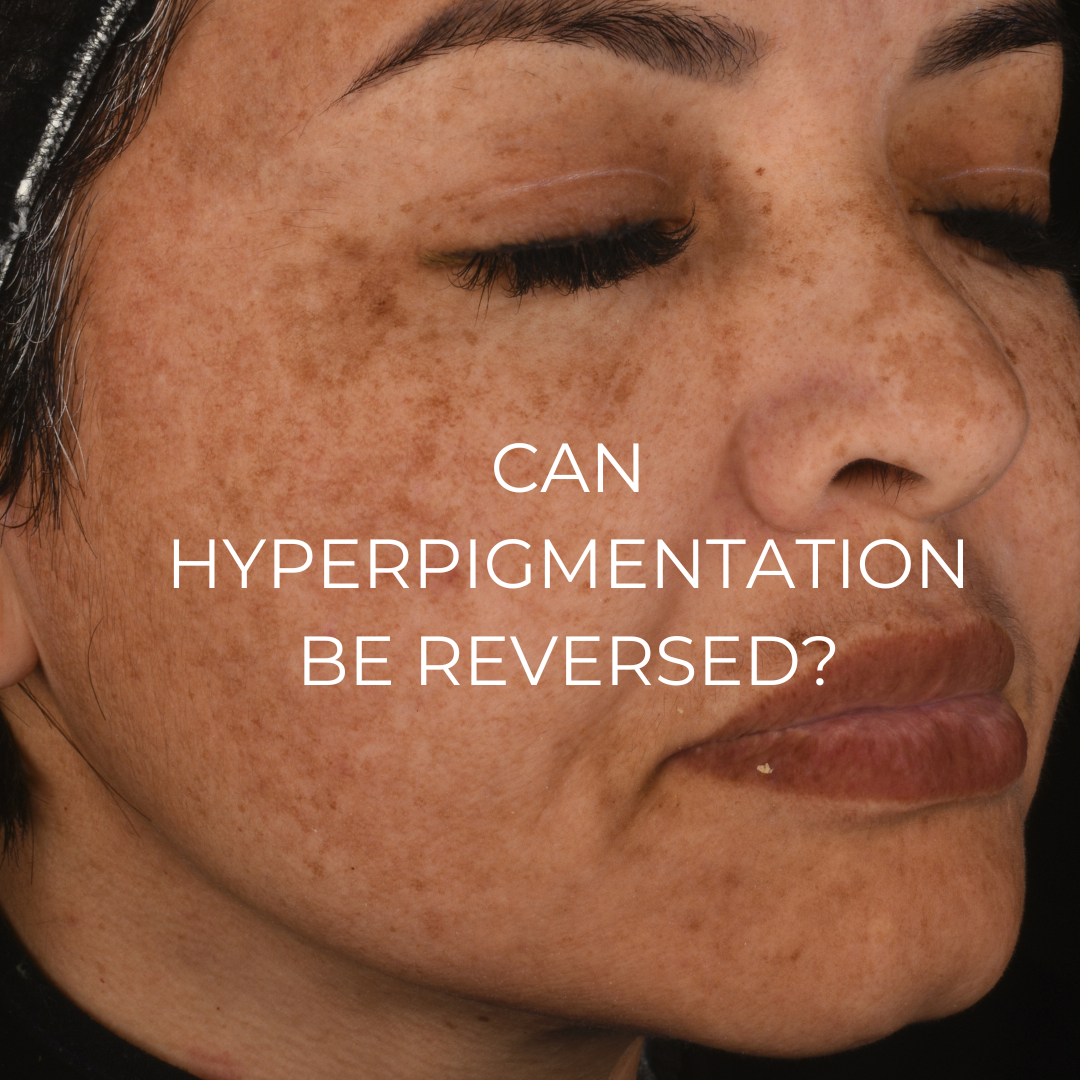
Can hyperpigmentation be reversed?
Share
Yes, hyperpigmentation can be reversed with the right treatments and skincare routines. Hyperpigmentation, the darkening of the skin due to excess melanin production, is often caused by sun damage, inflammation, or hormonal changes. Fortunately, several effective treatments can help lighten these dark spots and improve skin tone.
Effective Treatments for Hyperpigmentation
1. Chemical Peels
-How it works: Chemical peels involve applying a solution that exfoliates the skin, promoting the growth of new, evenly pigmented skin.
-Benefits: According to a study published in the Journal of Clinical and Aesthetic Dermatology, chemical peels can significantly reduce hyperpigmentation by removing the outer layers of the skin where pigmentation is more concentrated .
2. Microneedling
-How it works: Microneedling creates tiny punctures in the skin, stimulating collagen production and allowing for better absorption of lightening agents.
-Benefits: Research in the Journal of Cutaneous and Aesthetic Surgery shows that microneedling can improve the appearance of hyperpigmentation by enhancing skin texture and tone .
3. Topical Treatments
-Vitamin C is a powerful antioxidant that helps brighten the skin and reduce dark spots.
Benefits: A study in the Journal of Drugs in Dermatology found that vitamin C can significantly lighten hyperpigmented areas due to its ability to inhibit melanin production .
-Retinol speeds up cell turnover, promoting the shedding of pigmented cells.
Benefits: According to research in the Journal of Investigative Dermatology, retinol is effective in treating hyperpigmentation and improving overall skin appearance .
-Azelaic acid inhibits melanin production and reduces inflammation.
Benefits: Studies in the International Journal of Dermatology highlight azelaic acid's efficacy in lightening hyperpigmented skin and treating conditions like melasma .
-Kojic acid inhibits the enzyme tyrosinase, which is involved in melanin production.
Benefits: Research in the Journal of Cosmetic Dermatology indicates that kojic acid is effective in reducing hyperpigmentation and brightening the skin .
-Niacinamide, also known as vitamin B3, reduces the transfer of melanin to skin cells.
Benefits: A study in the British Journal of Dermatology found that niacinamide can significantly reduce hyperpigmentation and improve skin barrier function .
Combining Treatments for Best Results
Combining these treatments under the guidance of a dermatologist can lead to significant improvement in hyperpigmentation. Each treatment targets different aspects of pigmentation, making them more effective when used together. Consistent use and professional advice are key to achieving clearer, more even-toned skin.
Conclusion
Hyperpigmentation doesn't have to be permanent. With options like chemical peels, microneedling, and powerful topical treatments like vitamin C, retinol, azelaic acid, kojic acid, and niacinamide, reversing hyperpigmentation is achievable. Always consult with skin professional (in our store locator) to find the best combination of treatments for your skin type and condition.
At Mr. Lulu Skincare, we offer professional protocols and products combining all these technologies for results, fast.
References
"Chemical Peels in the Treatment of Pigmentary Disorders: An Update," Journal of Clinical and Aesthetic Dermatology, available at JCAD.
"Microneedling: Advances and Approaches," Journal of Cutaneous and Aesthetic Surgery, available at JCAS.
"Efficacy of Vitamin C in Dermatology," Journal of Drugs in Dermatology, available at JDD.
"Retinoids in the Treatment of Skin Disorders," Journal of Investigative Dermatology, available at JID.
"Azelaic Acid in the Management of Melasma," International Journal of Dermatology, available at IJD.
"Kojic Acid: A Review of Its Effects and Uses," Journal of Cosmetic Dermatology, available at JCD.
"Niacinamide: Mechanisms of Action and Its Role in Dermatology," British Journal of Dermatology, available at BJD.
